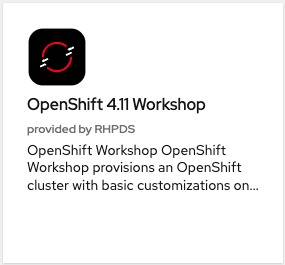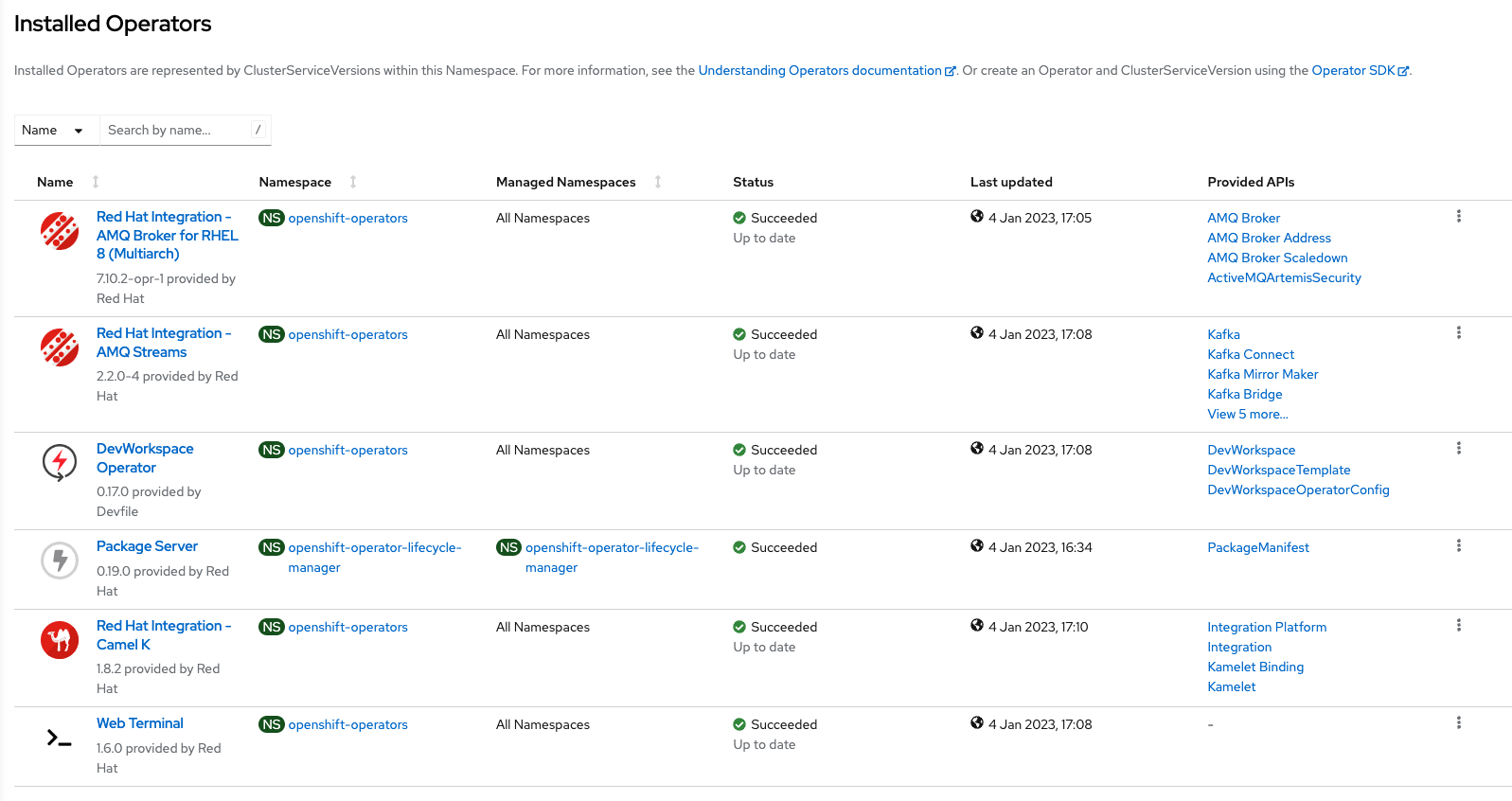OpenShift
OpenShift cluster
An OpenShift cluster is already deployed via RHPDS environment and “OpenShift 4.11 Workshop” service.
No action is required on your side.

The headquarter and warehouses have dedicated namespaces on this OpenShift cluster:
- headquarter
- warehouse-athens
- warehouse-brno
- warehouse-brussels
- warehouse-bucharest
- warehouse-dublin
- warehouse-lisboa
- warehouse-london
- warehouse-paris
- warehouse-stockolm
- warehouse-varsovia
OpenShift Operators
All the needed operators are already installed on the Openshift cluster. In the rest of this Lab you will just need to consume the CRD provided by these operators.
-
Red Hat Integration - AMQ Broker for RHEL 8 (Multiarch)
AMQ Broker Operator for RHEL 8 (Multiarch) provides the ability to deploy and manage stateful AMQ Broker broker clusters -
Red Hat Integration - AMQ Streams
Red Hat AMQ Streams is a massively scalable, distributed, and high performance data streaming platform based on the Apache Kafka® project. AMQ Streams provides an event streaming backbone that allows microservices and other application components to exchange data with extremely high throughput and low latency. The core capabilities include: * A pub/sub messaging model, similar to a traditional enterprise messaging system, in which application components publish and consume events to/from an ordered stream
- The long term, fault-tolerant storage of events
- The ability for a consumer to replay streams of events
- The ability to partition topics for horizontal scalability
-
Red Hat Integration - Camel K
Red Hat Integration - Camel K is a lightweight integration platform, born on Kubernetes, with serverless superpowers. -
Web Terminal
Start a Web Terminal in your browser with common CLI tools for interacting with the cluster. You have access to useful commands for this lab like oc, mosquitto and kcat.
To launch the web terminal, click the command line terminal icon >_ on the upper right of the console. This instance is automatically logged in with your credentials.

OpenShift cluster details
-
OCP Cluster console URL :
https://console-openshift-console.apps.cluster-5t9gs.5t9gs.sandbox744.opentlc.com/dashboards -
OCP Cluster API URL :
https://api.cluster-5t9gs.5t9gs.sandbox744.opentlc.com:6443
There is a dedicated OpenShift user for each warehouse.
On your table you will find a poster with the relevant information.
To connect to your Openshift cluster, click on the OCP Cluster console URL above and fill in your username and password. You will have acces to the Web Terminal by clicking on the >_ icon on the top right. The Web Terminal provides the oc client.